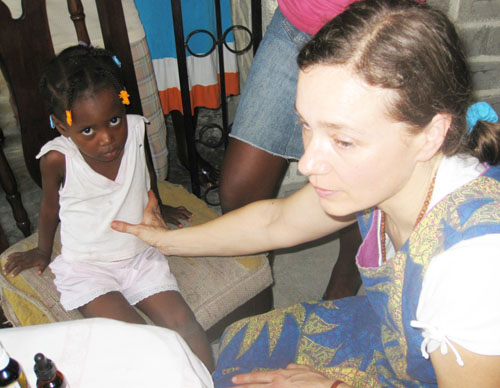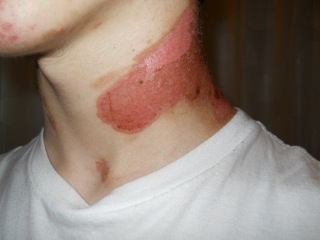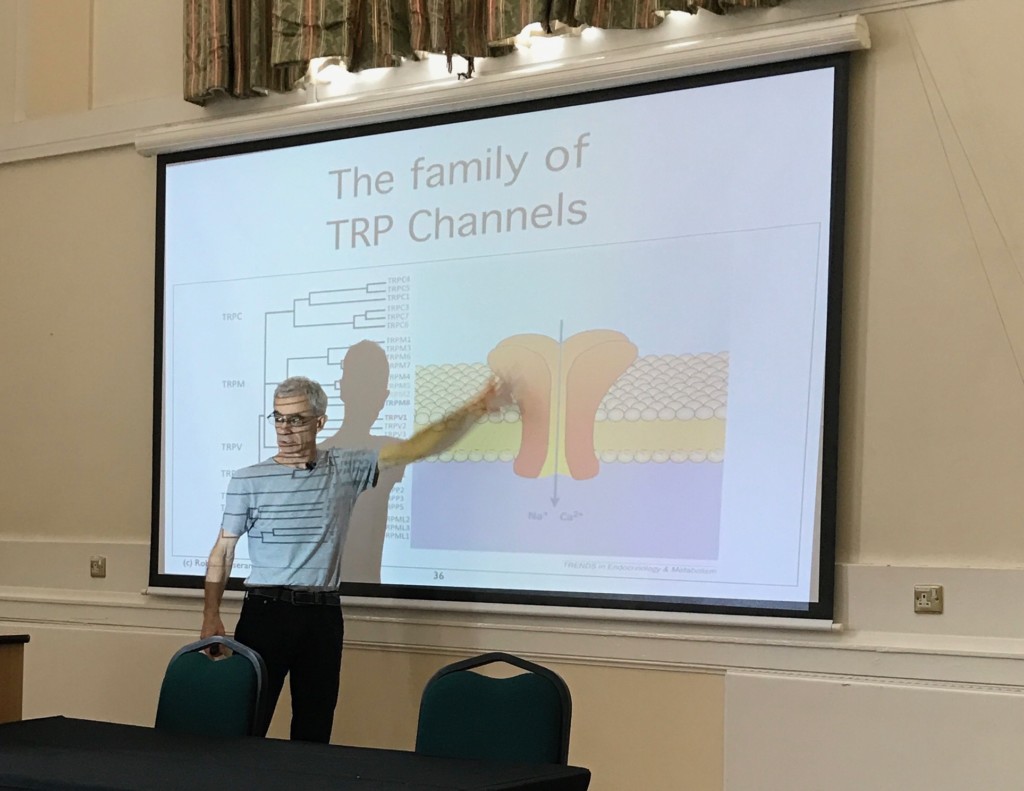by Hana Bělíková
The first weekend of September usually means preparations for a new school year. This year it was also an opportunity for aromatherapists to gather at Regent’s University in London for the annual conference of the International Federation of Professional Aromatherapists. The event was organized by Gabriel Mojay, the IFPA Chairman. Saturday September 2nd, featured four talks showcasing aromatherapy in relation to various challenging scenarios. Anita James, Julia Hoffman Graves, Angela Green and Robert Tisserand presented their lectures on Saturday, while on Sunday delegates could choose between two full-day workshops and spend the day either with Robert or Julia. Here are some highlights from the conference…
Saturday – aromatherapy in action
Smell Woman is here to help with childhood challenges
Anita James is an English aromatherapist, educator and the CEO of Essentially Holistic. She started working with children in 2003, launching the first “Smell Woman” project in infants’ school (ages 4-7). Her mission has been to provide aromatherapy-based psychological support for children in challenging situations.
The program focuses on creating positive reinforcement in a safe environment, with the help of essential oil blends. Whenever possible, a child is given a personalized blend. Anita shared the story of a boy who said that he felt comforted by the smell of wet dog – and indeed, she rose to the task with Vetiver and other “earthy” smells. If there isn’t a space to personalize a blend, there are now 15 stock blends for the children to choose from. Apart from being given a hand massage with the essential oils diluted in a carrier oil, each kid is given a “smell bottle” – a glass vial with a cotton ball infused with essential oils. Anita finds that children prefer these to ‘aromasticks’, plus they avoid any potential issues with plastic.
In the years since the project started, Anita and her assistants have seen meaningful progress. For example, children often experience increased focus, enhanced self-esteem, or effective anger management. Three months of aromatherapy hand massages and application of self-calming strategies, and an 8-year-old boy on the verge of exclusion showed a measurable improvement – including successful phasing out of Ritalin medication. The Smell Woman project has even helped children who might otherwise have been excluded from school altogether because of behavioral issues. With the full support of both teachers and parents – an important factor – this gentle aromatherapy program has proven to be a life-changing opportunity for many.
Emergency aromatic medicine in Haiti, where a little goes a long way
The second presentation of the day was from Julia Hoffman Graves, a naturopath and director of the Naturopathic Earthquake Survivor Relief Clinic in Haiti. Julia, together with her partner Jacquelin Giteau, flew to Haiti shortly after the devastating earthquake of 2010 and established an emergency mobile clinic, initially consisting of just a table and two chairs.
The clinic has since evolved and is now a permanent practice, open two days a week and providing free treatments. With the help of essential oils, homeopathic remedies and flower essences, clinic staff take care of the vulnerable population, which is pretty much everyone in Haiti. The situation is and has been dire, with atrocious hygienic conditions, widespread famine and STDs, and the inevitable psychological trauma. Julia pointed out that in emergency situations, you are not only presented with acute disease, but underlying this are the everyday chronic conditions that affect most people.
In her captivating presentation, Julia shared many successful and often heart-warming stories, such as that of a boy with oozing skin lesions on his legs. Topical application of essential oils resulted in an almost immediate healing effect. Essential oils have helped with many other conditions including pervasive vaginal infections and cases of post-traumatic stress disorder.
Using simple blends such as Tea Tree and Lavender, or whichever donated essential oils were available, the clinic has provided relief to tens of thousands of people. As bringing supplies to the country has been problematic, the current staff has to ration their precious essential oils very carefully, often using 1% dilutions or less. But even at low dilutions they have been working miracles. You can read more about the project, and donate to the cause here.
Aromatherapy and integrative medicine

Angela Green and Dr Anne Johnson at House of Commons, after giving a presentation to the British parliament
If Julia’s efforts in Haiti are an example of marrying different natural medicines, what Angela Green and her team are doing in Wales is an example of truly integrative health care. Angela is the Clinical Lead in Complementary Therapies at the Velindre Cancer Centre in Cardiff. The clinic provides aromatherapy support to cancer patients, but also their caregivers (often family members) and staff. Patients are referred to aromatherapists for various reasons, such as pain, fatigue, nausea, yet most often the intervention is focused on anxiety and panic.
After a diagnosis of cancer, the life of a patient often becomes a whirlwind of procedures and doctor appointments that come with inherent side effects, both physical and psychological. At the Velindre Cancer Centre, essential oils are used in massage, diffused in the air or used in personal inhalers to help gain a semblance of control and alleviate some of the noxious effects of treatment. The feedback from recipients is amazing. One 16-year-old leukemia patient with extreme anticipatory nausea and anxiety, was given an inhaler with Plai, Frankincense and Ginger. It helped him so much, he called it his “light sabre”.
The implementation of Complementary Therapies in the Velindre Cancer Centre is yet another example of how aromatherapy can be used alongside conventional health care in a truly integrative manner.
Robert Tisserand and skin safety
The last talk on Saturday was given by Robert Tisserand, who underlined the importance of diluting essential oils to prevent adverse reactions. Robert’s message has always been one of moderation, and he provided plenty of evidence to support his position. He started off addressing the three principal factors influencing the level of risk: hazard (linked to the essential oil applied), exposure (how much is applied and for how long) and host factors (age, health status, etc.). As the presentation was focused on skin safety, he only briefly mentioned internal toxicity.
Categorizing various adverse skin reactions, Robert then dove into the mechanisms behind them and explained how it is indeed possible to develop an allergy to an essential oil over time, mostly through overuse. Unfortunately, we have seen a handful of cases of severe systemic allergy, some with anaphylaxis, and very likely caused by long-term intense application of essential oils. However, as we have seen with the clinic in Haiti, even the most resilient infections can respond well to low dilutions, and there’s very rarely any need to take extra risks by using undiluted essential oils.
One well-documented type of adverse skin reaction to essential oils is phototoxicity, which manifests as a moderate to severe burn. The highest risk essential oils include some expressed citruses, such as Lime and Bergamot. In talking about skin allergy Robert referred to Cinnamon bark oil and the findings of our Cinnamon Survey. The good news is that these reactions can almost always be avoided by following safety recommendations. For more on this topic, read this article on the importance of safety.
Sunday – hands-on flower experience and cutting-edge science
There were two workshops offered on Sunday. Julia Hoffman Graves took her participants on a journey to the soul of plants (and to the gardens of Regent’s Park), while Robert Tisserand focused on a cutting-edge approach to the pharmacology of essential oils, and a critical look at Functional Group Theory. As I was not present at Julia’s day, I’m reporting here on the research end of things.
Transient Receptor Potential channels
We know that essential oils can be powerful healing tools, but the science is constantly evolving. “Following the science” not only helps us understand just how essential oils work in our bodies, but also points to new potential uses. One new discovery impacting essential oils is the field of Transient Receptor Potential (TRP) channels. These are receptors found on the surface of certain cells, and when activated (or sometimes de-activated) they affect the functioning of said cell, which can have important ramifications. We are just beginning to understand which essential oil constituents modulate which TRP channels, and what this means in terms of therapy.
Some TRP channels are found on sensory nerves, and at the most basic level they serve as pain or temperature receptors, but many are found throughout our body. For example, TRPM8 receptors sense cold, and they are activated by menthol and therefore Peppermint oil. Menthol also activates, and then desensitizes, TRPA1 channels, which partly explains why Peppermint oil can sometimes be therapeutic for chronic itch (0.5–5%) or for sensitive skin (0.2-0.5%), so long as it’s used in appropriate dilutions.
This is indeed a new frontier for aromatherapy, both in terms of explaining what we already know, and in terms of novel applications for essential oils. Some of the most promising areas include pain management, notably neuropathic pain and post-operative pain, pruritus, and weight management. Watch this space for more on TRP channels.
Functional Group Theory
Many aromatherapy schools and educators use Functional Group Theory (FGT) in an attempt to simplify the study of essential oils and their properties. FGT proposes that specific functional groups, or chemical families, possess definable properties. For example, monoterpene alcohols are said to be stimulant, ketones are said to be neurotoxic, and esters antispasmodic. Those who use this as a teaching tool often claim such simplification makes it easier to grasp the therapeutic properties of essential oils. But does FGT actually make sense? Does it stand up to scientific scrutiny? Robert Tisserand partnered with two Italians, Marco Valussi and Andrea Cont, to find out.
In the last part of his Sunday presentation, Robert put forward the findings of the team, which will be published as an extensive article later this year. They have bad news for FGT proponents. When compared with the scientific data, it turns out that the theory – really a hypothesis – has more exceptions than rules for some chemical families. One of the fundamentals of FGT is that monoterpene alcohols are CNS stimulants, yet a close look at the published research found that none of 17 monoterpene alcohols is stimulant – in fact, 13 of them show CNS sedative activity.
In other cases, such as anti-inflammatory, constituents from many functional groups share the same property, so identifying one particular functional group doesn’t really make sense. Robert stated that, overall, the evidence does not support FGT, nor does it support FGT’s ‘grid’, which places functional groups into quadrants according to pH and electrical resistance. The usefulness of a teaching tool that is not grounded in reality is therefore highly questionable and should be abandoned. At the present time, there is no other over-arching theory that could replace FGT, and perhaps there’s no need for one. We should be able to learn about essential oils and their constituents simply according to their actual known properties.
Conclusions
When thinking about aromatherapy, the first thing that comes to mind is often personal wellness and health. However, with appropriate knowledge and training, the powers of essential oils can be used to help those in great need. ‘English aromatherapy’ is definitely not just ‘feelgood’, it is also about doing good – and staying on top of new developments. Thank you to the IFPA and Gabriel Mojay for putting together such an inspiring event!






0 Comments